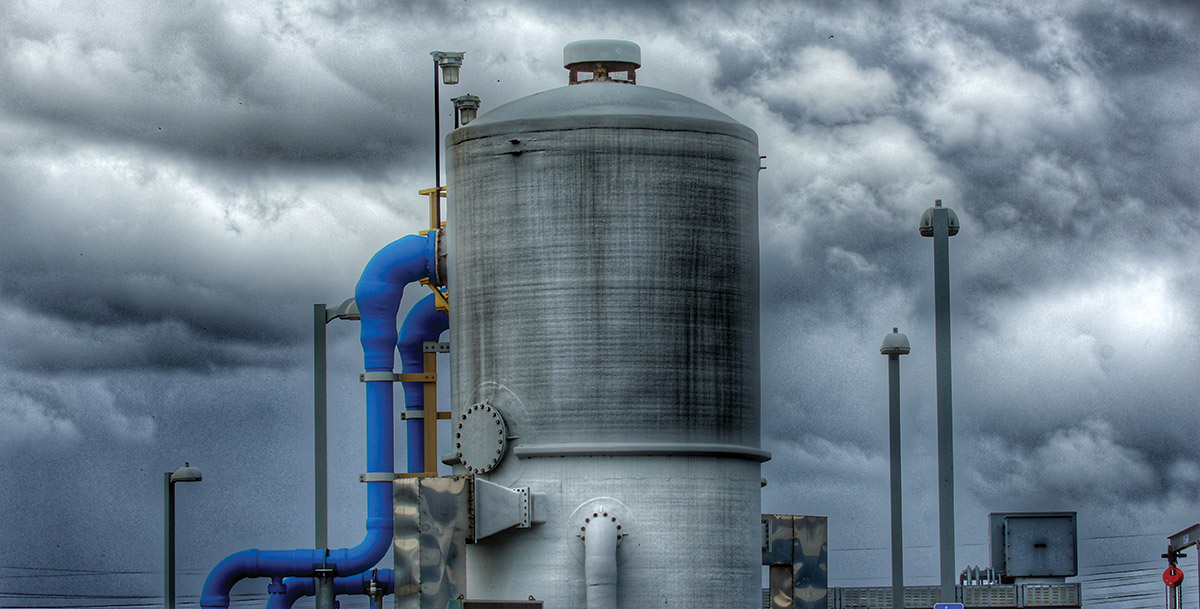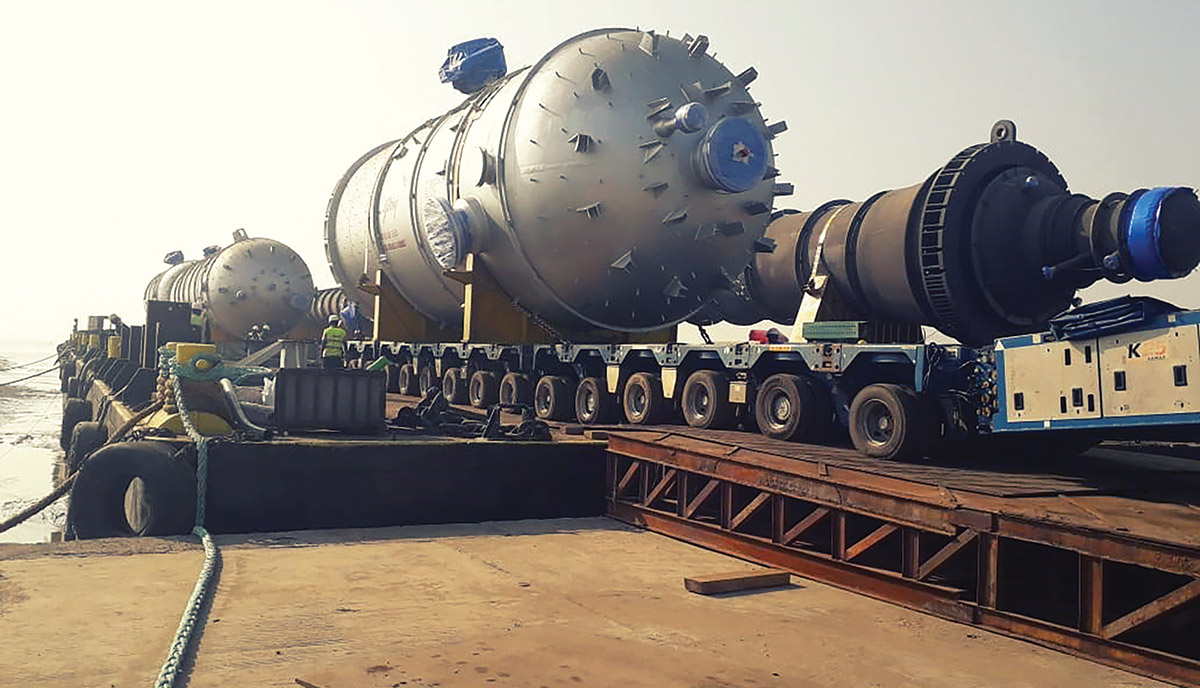The term ‘break bulk’ relates to trades where the cargoes are carried in unitised form, such as palletised, bagged, strapped, bundled, drummed, and also non-unitised general cargo such as vehicles, steel besides paper, wood, bags of cocoa, parts of wind turbines. These are all products that can be transported in a container or simply loaded in vessel holds. As the name suggests, it ‘breaks’ easily. To be able to lift general cargo, it is often packaged on pallets, in crates or racks. A crane or forklift truck can easily load or discharge the goods.
The major commodities for this segment are project cargo, steel, and windmill blades.
- Project Cargo
While a weak demand and overcapacity conditions continue to haunt container shipping, India’s growing project cargo trade is becoming a sweetener for ocean carriers operating to and from the Asian emerging market economy. In a prolonged, sluggish trade environment, ocean carriers have strategically shifted their focus to balancing their freight mix to create new revenue streams. Further, as India pumps billions into infrastructure development and accelerates domestic manufacturing efforts, ocean carriers believe the emerging market economy represents a lucrative market for all types of cargo — dry, refrigerated, and oversized.
As compared to other segments of the logistics industry in India, the break bulk segment in the past few years has seen a robust growth due to increasing volumes of exim cargoes, mainly due to enhancement in the manufacturing capacities of existing industries as well as the setting up of new industrial units, mostly export-oriented. The Indian economy, while achieving a year-on-year growth of around 7% in the past four to five years, is looking forward to growth of around 9–10% in the project cargo segment.
Transportation of project cargo requires a high level of expertise in handling due to the unique nature of the goods, as no cargo fits into a standard logistics solution; cargo with different dimensions requires a different set of equipment and infrastructure, as well as experienced personnel. The segment has emerged as a profitable business for logistics players in India and Indian ports are also readily adapting to project cargo needs. Further, India’s increasing participation in turnkey projects in the Gulf and in Africa is seen as another factor propelling local demand for project cargo handling. The Government of India, for example, are investing close to $500 million in the revamp of Iran’s Chabahar port; also, there has been movement of project equipment from India for the construction of the biggest oil refinery on the west coast of Africa. Besides, there is lot of movement of infrastructure materials from the Far East for the construction of the harbour sea link in the state of Maharashtra. Similarly, there are projects executed by the engineering majors L&T for IOCL where they are engaged in the manufacturing of the crude oil distilling plant at Visakhapatnam and also setting up an AVU (atmospheric and vacuum distillation unit) at Barauni. Such projects engage the movement of project materials by ships along the coast as well as to / from various countries. Industry estimates show project cargo demand in India would rise at a 17% compound annual growth, to $19 billion, by 2022.
- Steel
India has become the world’s second largest producer of crude steel (up from 8th spot in 2003) with 111.2 million tons (MT) by 2019. In FY20, crude steel production and finished steel production in India was 108.5 MT and 101.03 MT, respectively. During the COVID-19 pandemic, between April 2020 and January 2021, India’s cumulative production of crude steel stood at 87.21 MT and finished steel at 76.04 MT. In November 2020, the Steel Authority of India Limited (SAIL) reported 7% YoY growth in crude steel production. Export and import of finished steel stood at 8.42 MT and 6.69 MT, respectively, in FY20. Export and import of finished steel stood at 8.84 MT and 3.79 MT, respectively, between April 2020 and January 2021. India’s per capita consumption of steel grew at a CAGR of 4.43% from 46 kgs in FY08 to 74.10 kgs in FY20 and is growing. India surpassed Japan to become the world’s second-largest steel producer and overtook the US as the second-largest consumer of steel in 2019. Moreover, capacity increased to 142.29 MT in FY20 and the figure is anticipated to rise to 300 MT by 2030–31.
With the growth opportunities in India, the demand for steel from different sectors is expected to drive this industry. Consumption of steel by India’s infrastructure sector is expected to increase to 11% by FY26. Steel demand from the automotive sector is expected to increase due to rise in the demand for automobiles. The smart cities, affordable housing and industrial corridors are a few government initiatives to boost the steel industry – about 158 lakh MT of steel are likely to be consumed in the construction of houses. The Ministry of Steel plans to invest US$ 70 million in the eastern region of the country through accelerated development of the sector. The production capacity of SAIL is expected to increase from 13 MT pa to 50 MT pa in 2025, with total investment of US$ 24.88 billion. In March 2021, Arcelor Mittal Steel signed Rs 50,000 crore deal with Odisha government to set up a steel plant in the state. Companies in the steel industry are investing heavily in expanding their capacity. Major public and private companies, including Tata Steel, SAIL and JSW Steel, are expanding their production capacities.
The export of steel gives a great boost to the shipping fraternity, both in terms of agency and stevedoring besides the carriage. At present, the Indian ports facilitating such exports are majorly situated on the east coast of India, due to their proximity to the steel-integrated plants at Bhilai, Bokaro, Burnpur, Rourkela, Durgapur, Jamshedpur and Visakhapatnam; the Indian ports servicing the exports are Haldia, Dhamra, PICT (Paradip), Gangavaram and Vizag.
- Windmill Blades
The other demand that is prevalent is the global renewable energy sector, a vision for clean, affordable, and sustainable energy. The Indian wind industry has been around since the 1980s. For many years it existed only in Tamil Nadu, which was also known as the windiest state. However, in the last decade it has spread to eight other states that have a substantial strong wind potential. The centre wants to buy electricity from the wind-power producers and sell it to electricity-supply companies. India, with 38.789 GW, has the fourth biggest capacity in the world, after China, the U.S. and Germany. The commercial arm of MNRE, IREDA and other financial and banking institutions has backed the industry as a stable market where there is assured offtake and no marketing challenges. The Government of India has announced a laudable renewable energy target of 175 GW by 2022, out of which 60 GW will be coming from wind power. There are many world-renowned names in this business and there is regular export of windmill blades from ports such as Tuticorin, Krishnapatnam, Chennai, and Kandla.
- PTA
Chemicals/acid in the form of granules are bagged in 1.0 MT jumbo bags for sea transportation. One example of such acid is PTA (purified terephthalic acid) in granule form. PTA demand has been fuelled in recent years because of its use as a raw material for the manufacture of PET and polyester staple fibre, which are indispensable in the textile and packaging industry.
Reliance Industries Limited, Materials Chemicals and Performance Intermediaries Private Limited (MCPI), JBF and Indian Oil Corporation Limited are the major PTA producers in India. PTA supply and demand in the past five years have been dependent on the rigorously fluctuating naphtha and PX prices in the international market in the face of volatile oil and gas prices. The declining value of the Indian rupee against the US dollar has led to an increase in the costs of feedstock procurement, which is the single largest cost of PTA production.

- Bulk to Break Bulk Carriage
Carriage of cargo in bulk has offered the best mode of transportation. However, it brings about severe handling losses, which happens during the multimodal transits. In order to arrest this issue, many shipments have now been shifted from bulk to bag, though handling bagged cargo also has its own challenges on board and needs careful consideration. The commodity being bagged itself has to be robust to withstand outside pressure and compression, for the bags will only hold the contents in one place and will not provide protection against external damage. Such commodities might typically be fertilisers, grain (rice, maize, wheat, etc.), minerals, ores, salt, seeds, sugar, coconut, coffee, fresh vegetables, frozen meat, and small items such as shells and raisins.
- JMB – Numero Uno
JMB Group, in its role as one of the world’s leading shipping agencies, has also evolved as one of the main support service providers when it involves breakbulk shipment. It has the necessary expertise and experience in handling the agency of these vessels and also the stevedoring activity in the most professional and safe way.
